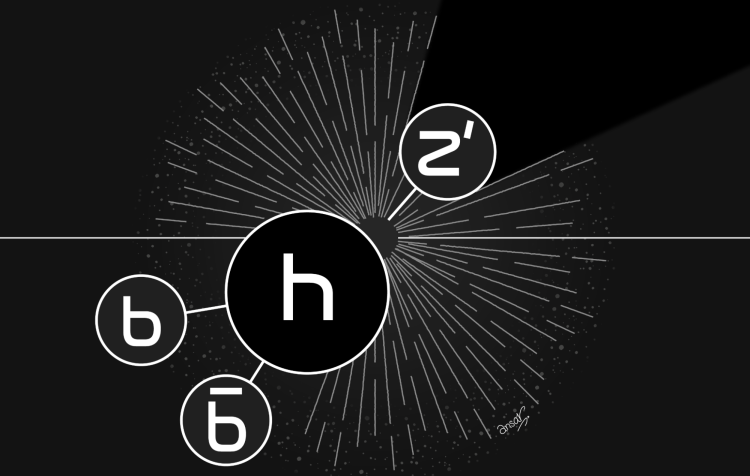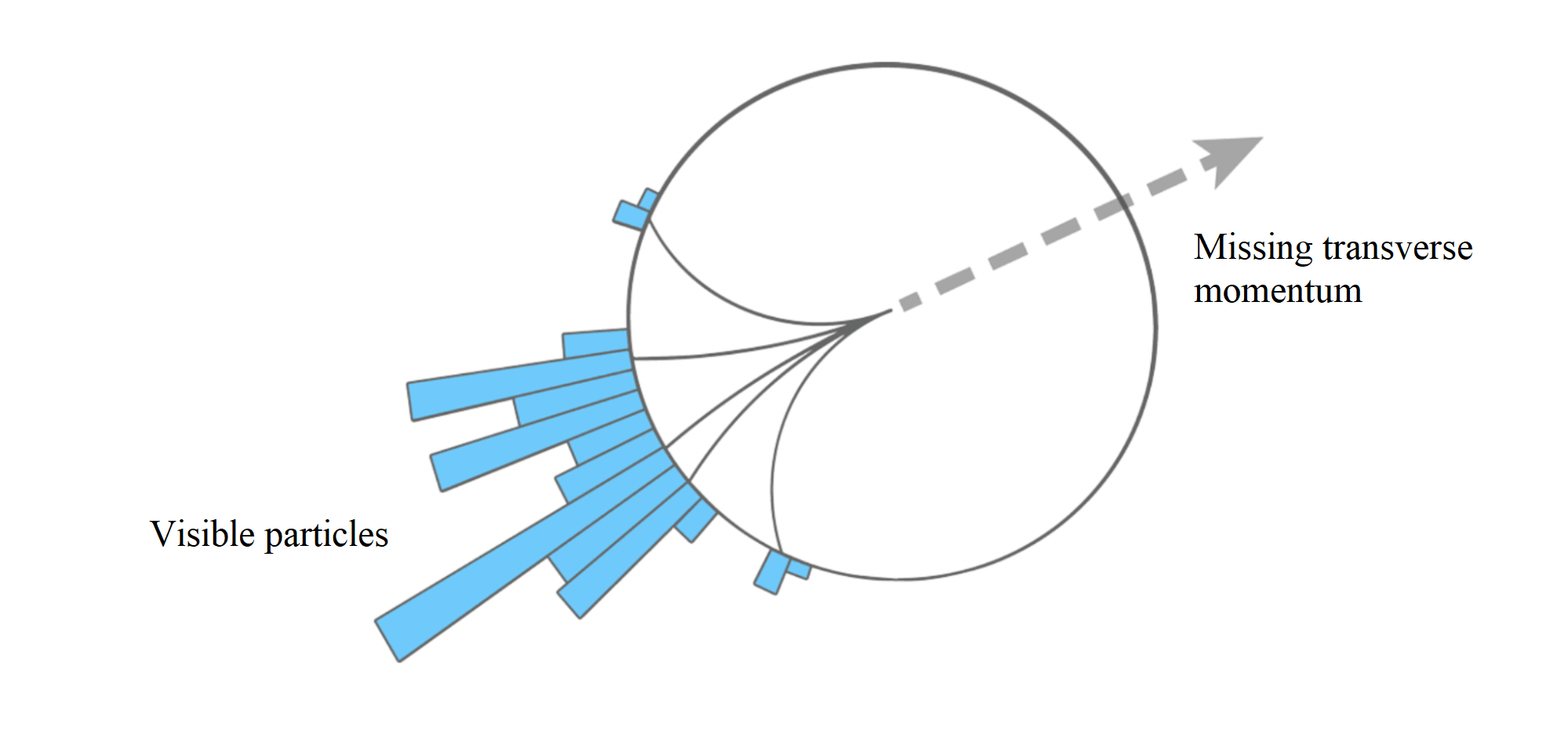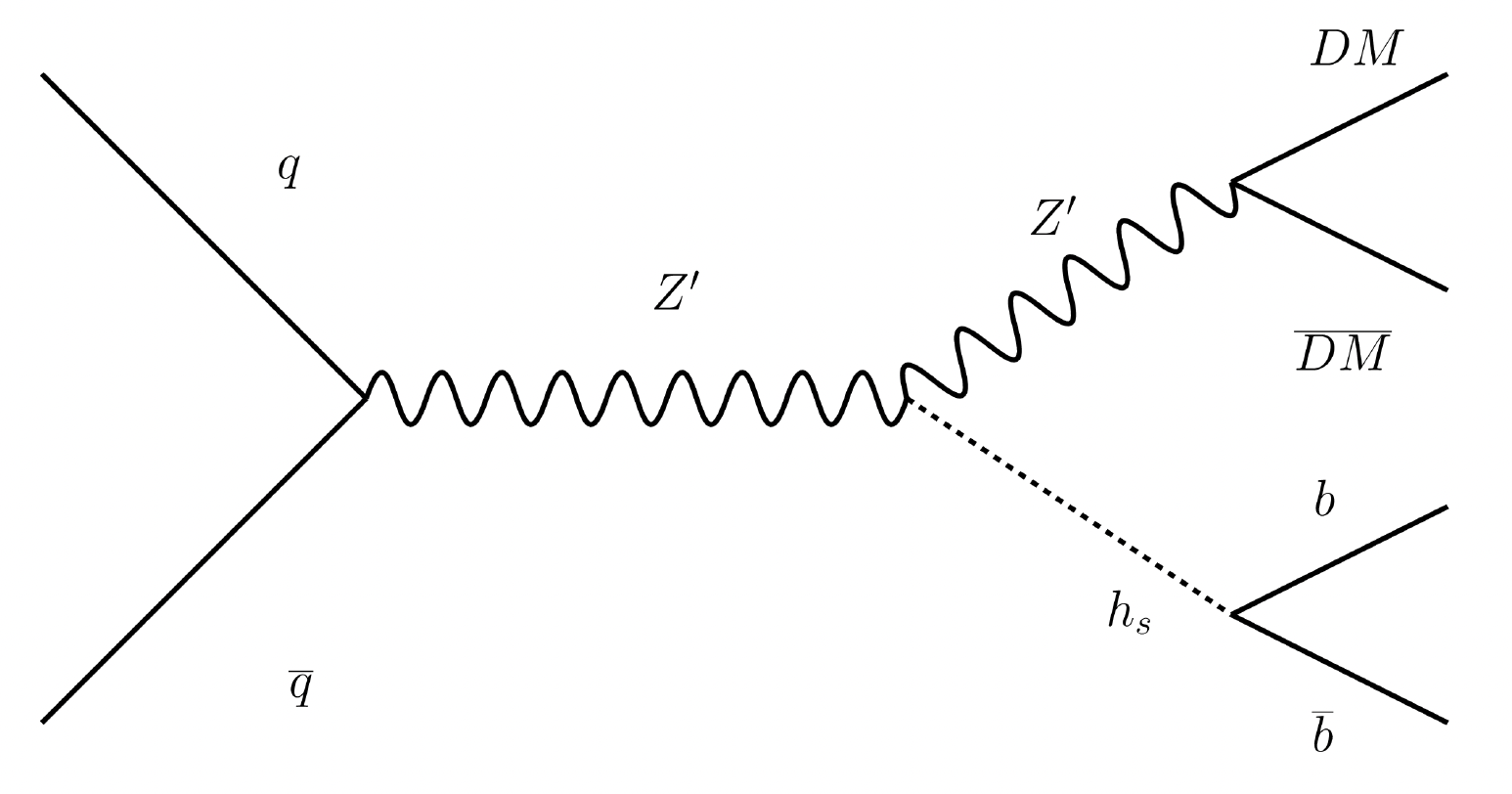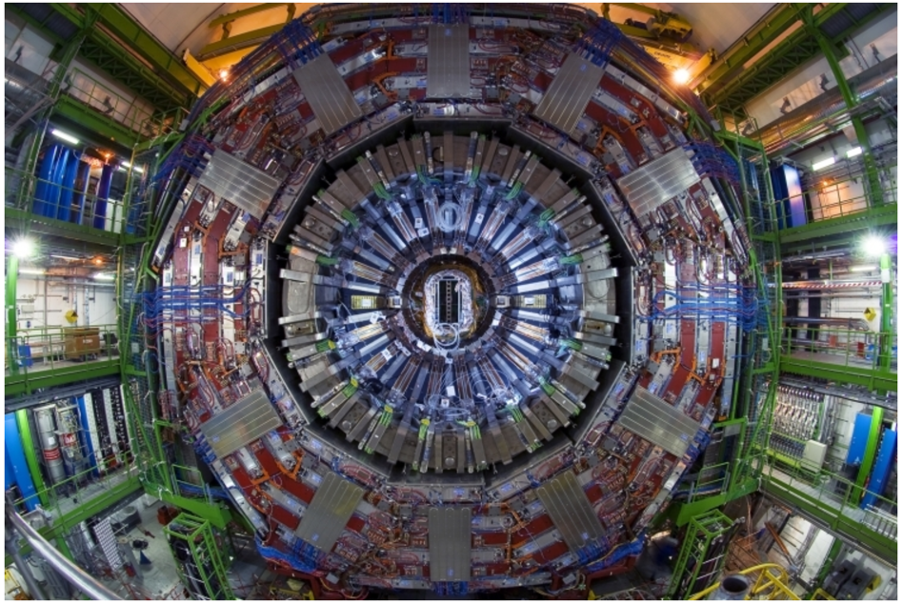
Remember the media buzz when we finally pinned down the Higgs boson in 2012? Turns out it might have a shadowy cousin – the dark Higgs – and CMS is chasing it down.
CMS scoured its entire Run 2 data set,138 fb–1 of proton-proton collisions at 13 TeV, for a dark-Higgs boson, a “shadowy cousin” of the particle discovered in 2012. Using a machine-learning tagger to identify a jet (a collimated spray of particles) likely originating from a bottom quark-antiquark pair, plus large missing momentum, the analysis found no excess above standard-model expectations. The result excludes at 95% confidence level dark-Higgs masses below 160 GeV and mediator masses up to 2.5–4.5 TeV – the first CMS limits on this scenario. By closing off a previously unexplored production mode and demonstrating the power of AI-assisted jet techniques, the study sharpens the global hunt for dark matter and sets the stage for even deeper searches in Run 3 and the High-Luminosity LHC era.
Dark matter is one of modern physics’ deepest puzzles. If dark matter is made up of subatomic particles, then billions of them must cross every square centimeter each second. So, how do we search for this elusive particle? As we like to joke, you can “break it, shake it, or make it”: Break dark matter in space and watch for the debris (indirect detection), shake it as it bumps into atoms in ultra-quiet underground tanks (direct detection), or make it from scratch in proton-proton collisions at the Large Hadron Collider (LHC).
Could the LHC create such particles in the lab?
When we accelerate particles at the LHC, and collide them at one of the four possible collision points (one of them being the CMS detector), they are aligned in a way that the momentum in the direction transverse to the beam is zero. So, when particles in these crossing beams collide, and new particles are created, the total transverse momentum of these particles must also add up to zero. If it's not zero, then something "invisible" must have carried it away. We quantify that imbalance as missing transverse momentum (shown below). Neutrinos often cause it, but an unaccounted excess might point to dark matter.

Above: Schematic representation of missing transverse momentum.
This analysis targets a specific model in which an unseen force carrier (or “mediator”), called Z′, links dark matter to ordinary quarks. The Z′ can radiate a dark Higgs boson – a shadowy cousin of the Higgs boson discovered in 2012. The dark Higgs boson is expected to decay into a bottom quark-antiquark pair that merges into a single large-radius “fat” jet, while the Z′ produces invisible dark-matter particles.

Above: Schematic (Feynman) diagram for the associated production of dark Higgs boson (denoted as hs) and dark matter (DM) particles. The interaction with standard model quarks is mediated by a Z′ boson.
Using AI to recognise b-jets
Jets produced by bottom quarks have a distinctive, but subtle, substructure. To capture it we use a tagger called “DeepAK15”, an artificial neural network that spots the intricate b-jet substructure. An event with one DeepAK15-tagged fat jet plus a big burst of missing momentum is our golden signature.
From data to conclusion
A statistical fit is performed on the full Run 2 data set, which determines a background prediction and checks if there is an excess above that prediction.
The data agree with the background model predictions within uncertainties; and no sign of a dark Higgs boson appears. Therefore, limits are set for the first time with CMS data on the signal strength for dark Higgs boson mass hypotheses below 160 GeV. Values of the mediator mass up to 2.5–4.5 TeV are excluded depending on the dark Higgs boson mass.
What’s next?
Run 3 of the LHC is already under way, and the High-Luminosity upgrade will allow us to collect ten times more data. With even smarter real-time AI triggers and refined jet-analysis tools, CMS will probe deeper into the dark sector – until either the elusive dark Higgs boson reveals itself or the allowed phase space is closed for good.
Written by: Erdem Yigit Ertorer, for the CMS Collaboration
Edited by: Muhammad Ansar Iqbal
Read more about these results:
-
CMS Physics Analysis Summary (SUS-23-013): Coming soon
-
@CMSExperiment on social media: Bluesky - Facebook - Instagram - LinkedIn - TikTok - Twitter/X - YouTube

